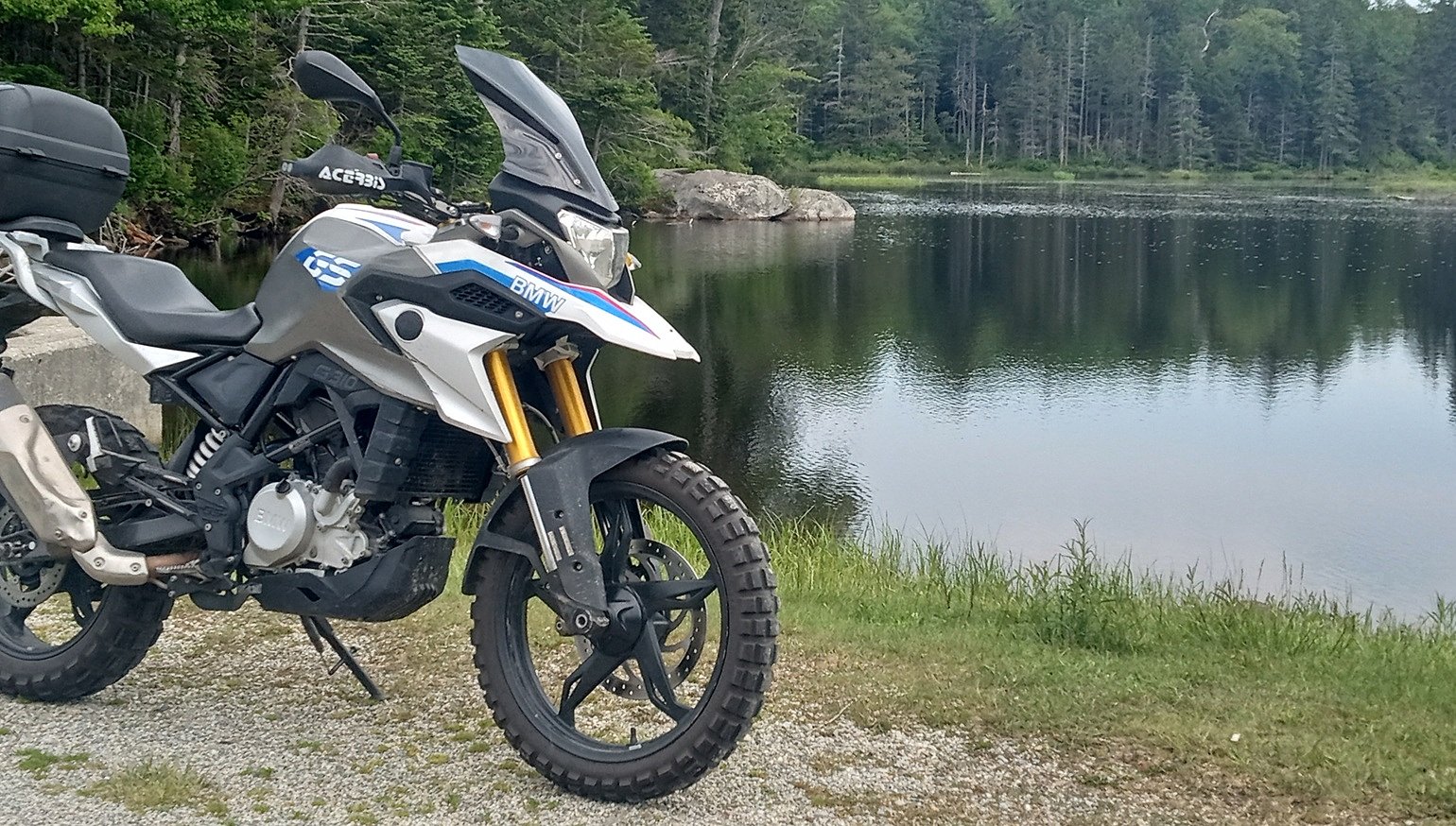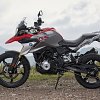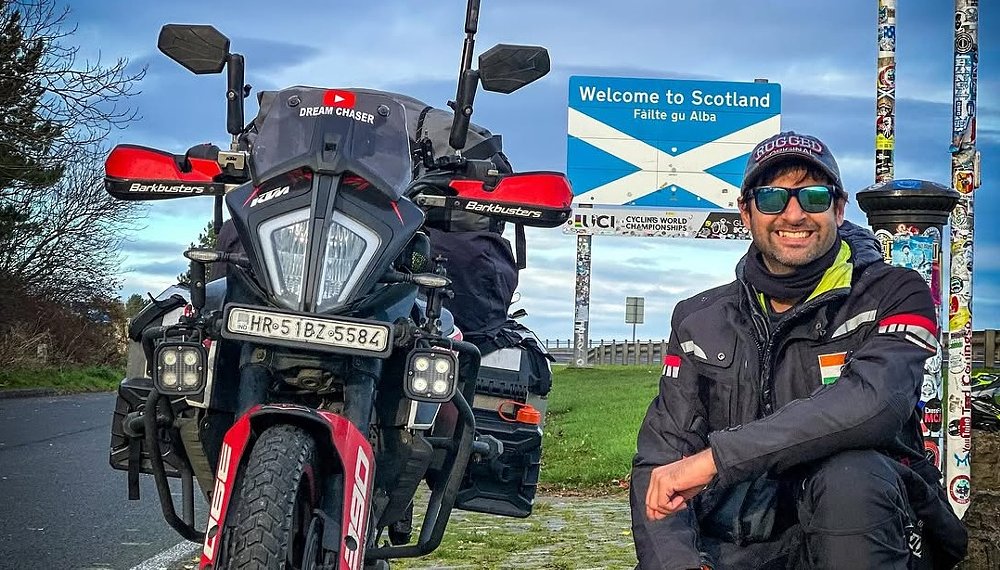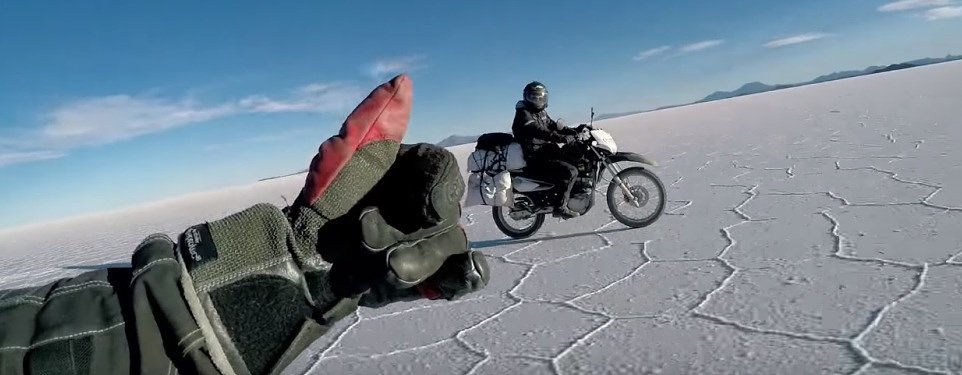Ride around on a smaller motorcycle in these United States of bigger-is-better America for any amount of time and someone will sooner or later tell you that you "can't" travel long distances on a "small" bike (and "small" is a very subjective and shifting definition).
At the same time, we know you can do transcontinental rides on a 50 cc scooter, because it's been done. You can finish 12th in the Iron Butt Rally (riding 11,186 miles in 11 days) on a Kawasaki Ninja 250. That's been done.
Somewhere between what people say you can't do and what you can do lies a line. With a smaller motorcycle, you might have to make some compromises, whether in comfort, trip planning, or rider attitude, to complete a multi-day trip. At some point, those compromises cross that line and start to feel like sacrifices. You can still do it, but do you still want to do it? Would you recommend it to a friend? As documented here on Common Tread, I rode a nearly 30-year-old Suzuki GN125 with a top speed of around 60 mph from Ohio to Maine. I'm glad I did it, because I got a good story for Common Tread and, even more importantly, I handed down a sentimental family heirloom to the next generation. But strictly for purposes of getting from point A to a certain point B that happens to be 900 miles distant, that wouldn't be my preferred method and I can't say I'd recommend it.
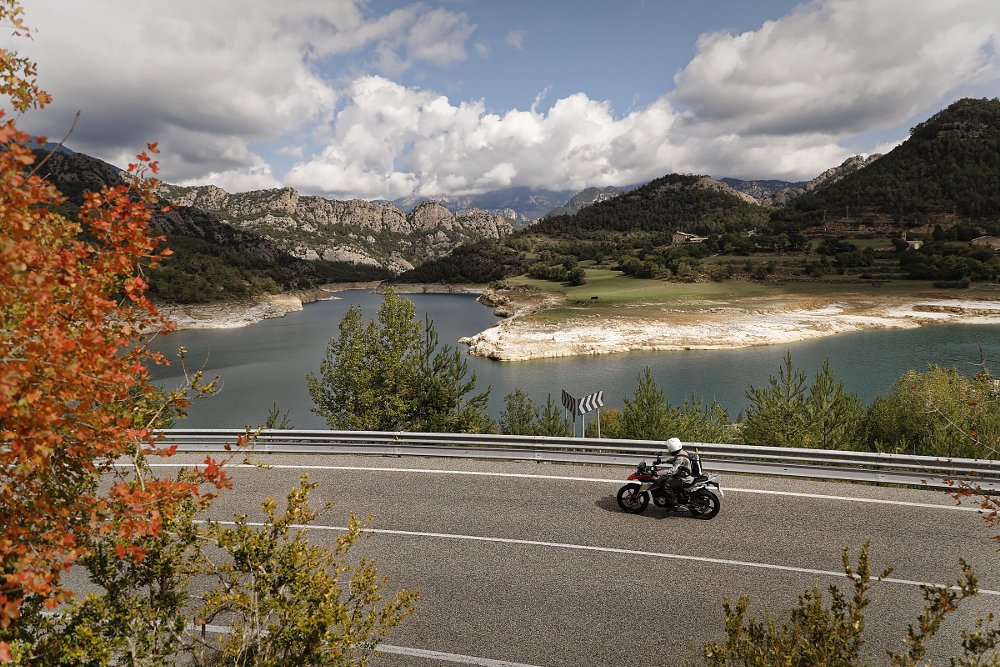
I started thinking about this because for nine months I had custody of the well used Comoto-owned 2019 BMW G 310 GS, affectionately nicknamed Baby Shark by my former colleague Jen Dunstan after she rode it at Get On! Adventure Fest, and it struck me at some point that this could be the smallest motorcycle I would recommend taking a trip on. Is it? There's one way to find out.
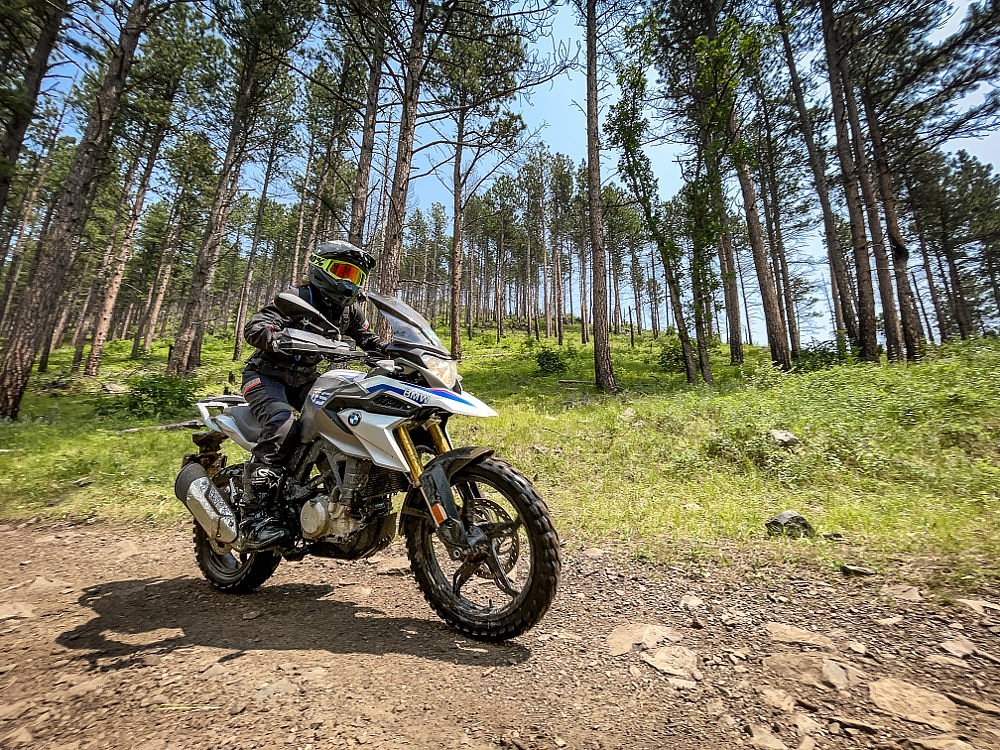
What's the smallest motorcycle you'd want to take a trip on?
Everyone's answer to the question above will be different. For me, it's a small motorcycle that, understandably, isn't the plushest or the quickest, but at the same time doesn't make me feel like I'm making sacrifices and compromises solely for the character-building effects of suffering. It's a small motorcycle that doesn't limit me to certain roads to avoid feeling like I'm putting myself at undue risk. Could that be the G 310 GS?
I originally intended to test that idea with a multi-day trip, but I ended up taking a new 2025 Honda Transalp instead (review forthcoming). That was more comfortable for me and certain to get a lot more reader interest than a story about a six-year-old baby Beemer.
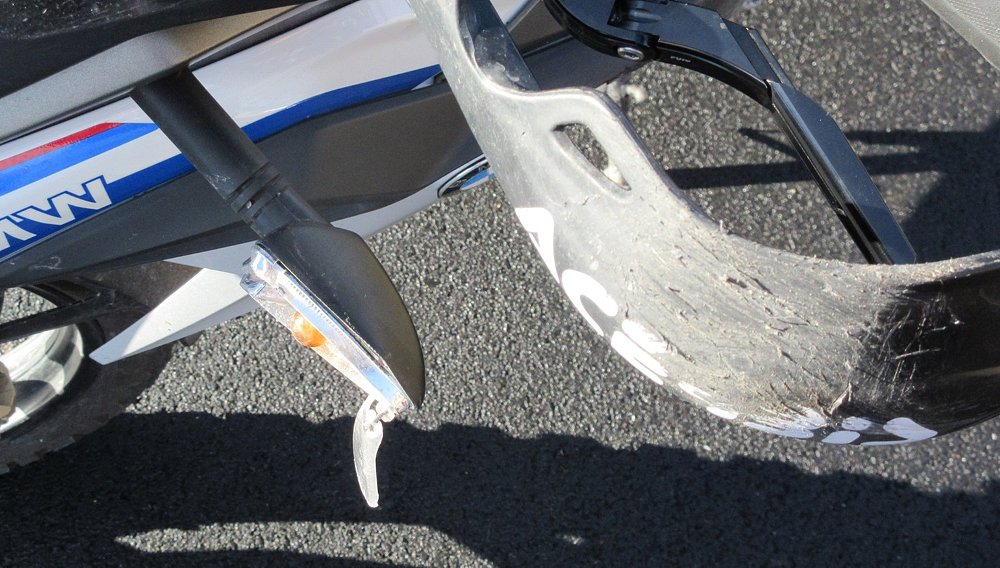
I did get a thorough understanding of the little GS during my nine months of custody, however. There was the long ride home from RevZilla HQ back in December, rides in all kinds of weather, from winter to summer. Everything from local dirt roads to interstate highways. The GS handled it all, never flashily or spectacularly, but steadfastly.
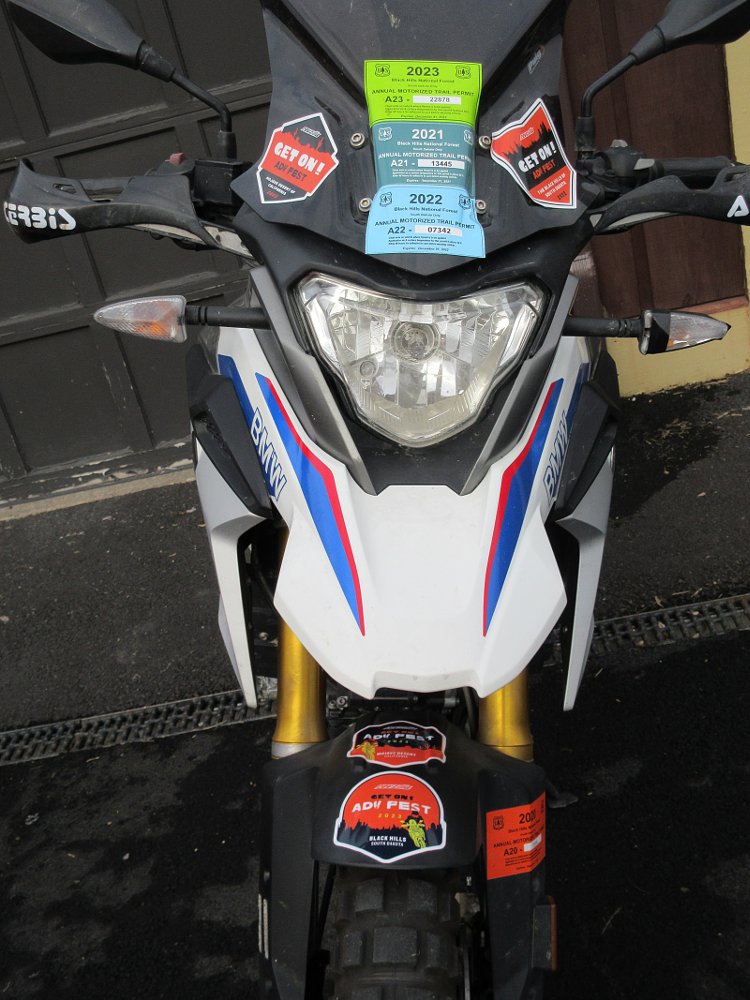
The liquid-cooled single-cylinder engine is only 313 cc in displacement, but the G 310 GS does not feel like a "little" motorcycle or toy-like. With a seat height of 32.9 inches, a wheelbase of 56 inches, and a weight of about 400 pounds (with the accessories we've added), the smallest GS feels and looks like a full-size motorcycle — but not a big one. Our G 310 GS has been outfitted with some accessories that make it more travel-worthy: a Puig Touring Windscreen for wind and weather protection beyond what the stock flyscreen provides, Acerbis handguards, and a Givi top box for weatherproof luggage capacity. All those accessories made it more comfortable on a long day on the highway. On the other side of the scale, it was also fitted with Continental Twinduro dual-sport tires, which were mounted so it would perform better on the trails at Get On! Adventure Fest, not with I-476 in Pennsylvania in mind. We're talking some chunky knobs.
The time finally came for me to return the GS and pick up the Transalp that Spurgeon was finished testing so I could return it to Honda. I decided to make my last day on Baby Shark a full day of riding, with the intent of seeing if it truly was the smallest motorcycle I'd want to take a trip on or if I'd regret taking the long way.
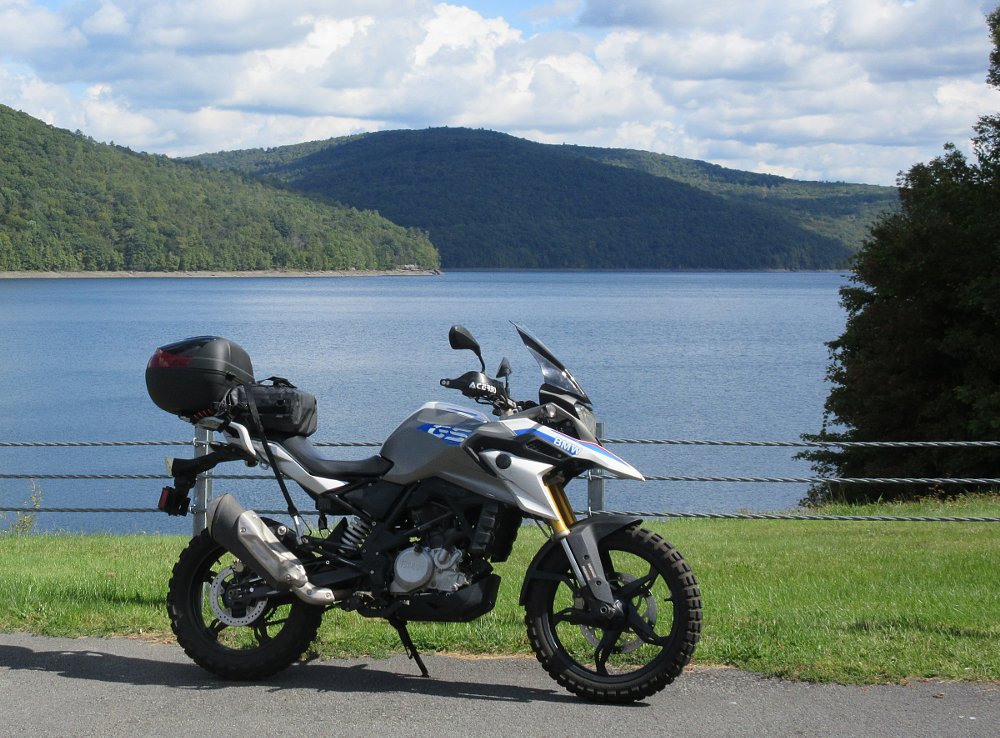
My last ride on Baby Shark
I planned the kind of day anyone might take on a motorcycle trip: I took winding Route 2, the Mohawk Trail, out of Massachusetts and into New York, zipped through the state capital on the highway, and veered south on New York Route 30, a road Spurgeon recommended in a Common Tread article on the Catskills a decade ago. The highlight was the curves on the hillsides above the Pepacton Reservoir, a far-flung water source for New York City. Slipping into northeastern Pennsylvania on similar back roads, I eventually did what most people have to do at some point on a trip: make some time. I finished the day on I-476 and pulled into the parking lot of our partner dealership, Montgomeryville Cycle Center, having traveled 327 miles since I left home.
The smallest motorcycle you'd want to take a trip on should be lively enough not to sap the enjoyment from the fun parts and capable enough to keep you comfortable on the inevitable long and boring stretches. First the fun part.
Clearly, with a claimed 34 horsepower on tap, suspension that's not adjustable except for rear preload, and single disc brakes, the G 310 GS is not going to lead the pack on the curves around the reservoir. But it does handle predictably, and while there's never a rush of power, there's a certain enjoyment in turning the throttle to the stop now and then, something I basically never do with modern motorcycles with triple-digit horsepower.
In the curvy bits of my last ride, I was impressed, not for the first time, at how well a blocky, dual-sport tire can perform on pavement. In the nine months, I went from dirt roads to high-speed highway runs, cold weather to hot, and the one condition where I lacked confidence in the Twinduros was on cold, wet pavement. Not that they ever let me down, but the feel was not reassuring.
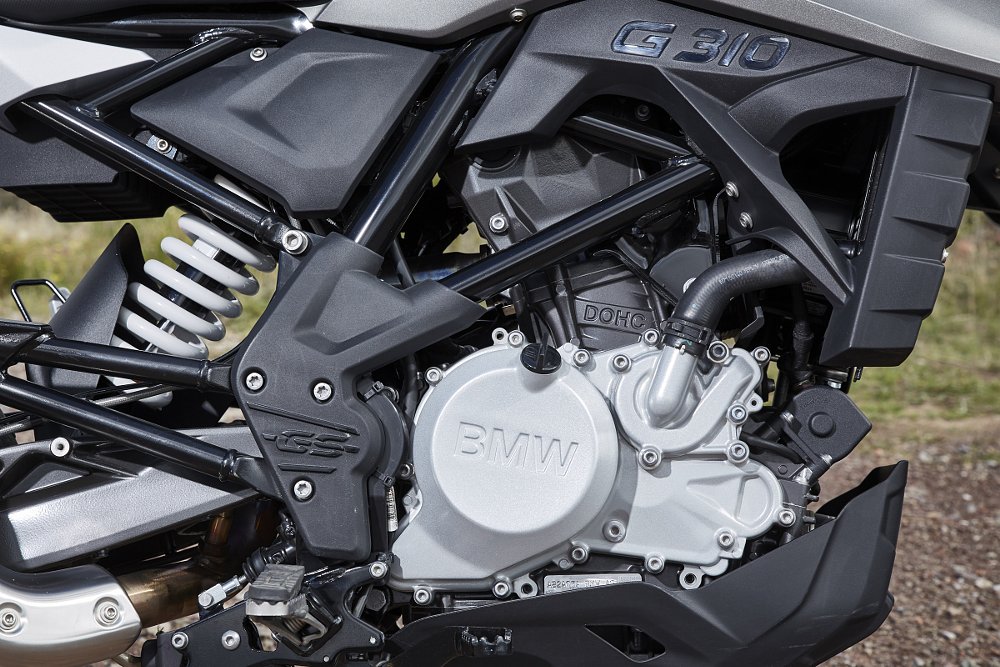
So that's the fun part, but what about the capable part? The first question a lot of people ask about a 300-class single is whether it can safely keep up with traffic on U.S. interstate highways. At one point on I-476, where 10% of the drivers act like they're auditioning for a Formula 1 ride, an impatient Volvo pilot zipped past me in the left lane, so I pulled out into the draft — purely for scientific research purposes, of course — figuring the crossover in a hurry would clear my path of any Pennsylvania state troopers lurking ahead. I briefly saw an indicated 91 mph on the speedometer (REVER recorded this as 89 mph) and then I backed off and returned to a more appropriate place and pace in the right lane, where I belonged. The Baby Shark felt a little flighty at any speed above 80 mph, but that probably has to do as much with the off-road-capable tires as it does the motorcycle itself.
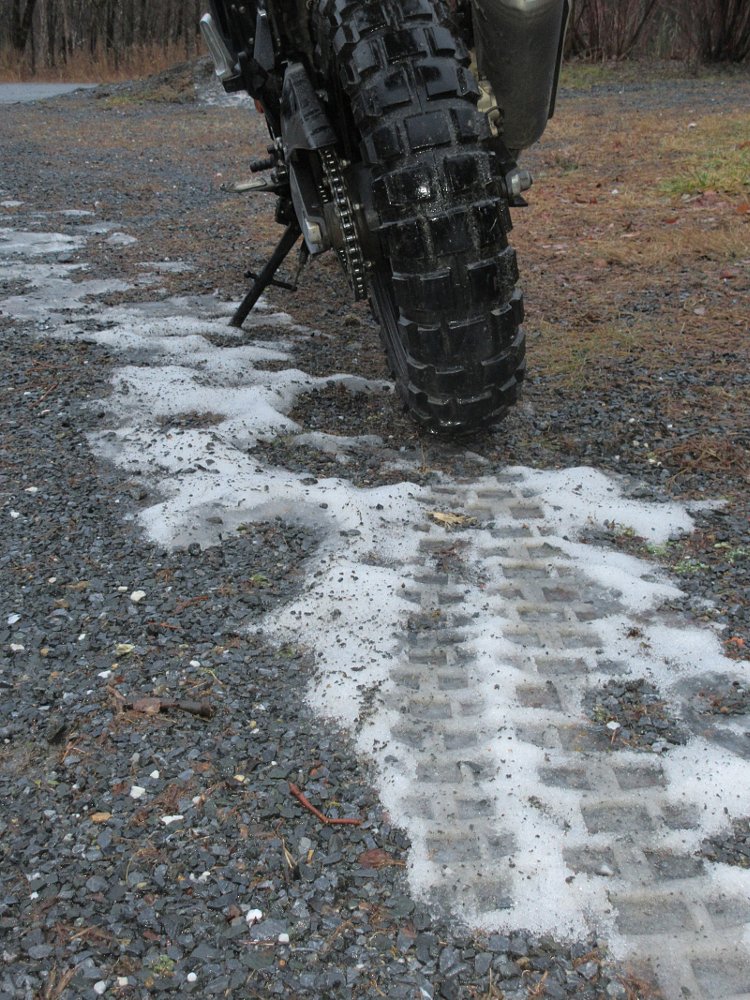
The point is, the G 310 GS is highway-capable. Redline on the G 310 GS is 10,000 rpm and 7,000 rpm in sixth gear yields an indicated 73 mph. It cruised at that speed without feeling unduly strained or putting my toes or fingers to sleep with vibration, and while it can't leap forward from that speed like one of its burly 150-horsepower adventure-class big siblings, it still has a little acceleration left in it, if you need it. Just don't need it in a hurry.
Of course there are compromises, given the displacement and price point. While vibration from the single was not a problem for me, the engine has a coarse feel, not the sense of smooth competence you get from more expensive motorcycles built for touring. At steady throttle, it sounds normal, but crack the throttle wide open — as you can do, and inevitably will do, on a 34-horsepower single — and the sound suddenly seems to triple in volume, going from the steady thrum to a pounding that sounds like someone smacking a hard object with a mallet at 7,000 spm (spm = smacks per minute). While noise triples, velocity, sadly, does not.
Still, at the end of nine months of regularly riding the G 310 GS, ending with a day of seven and a half hours of riding and sightseeing, I pulled into the parking lot thinking, "Yeah, this could be the smallest motorcycle I'd want to take a trip on." Well... maybe.
The one that may dethrone the GS
Unfortunately, I have to waffle here a little when readers would probably prefer me to be decisive. There's a green reason for that.
Despite the fact that I've ridden nearly 100,000 miles on various Kawasaki Versys models, I've yet to ride the Versys-X 300. But based on the stats, plus what my colleague Zack Courts tells me, the Versys-X looks more appealing for a long day of riding. The engine is a scant 17 cc smaller than the BMW's, but it's a smoother twin. Stock, the Kawasaki has better wind protection. The Kawasaki's seat is a touch lower, the weight's about the same, and, with touring in mind, the fuel tank is a whopping 50% bigger than the BMW's. And the Kawasaki now lists at $200 less expensive.
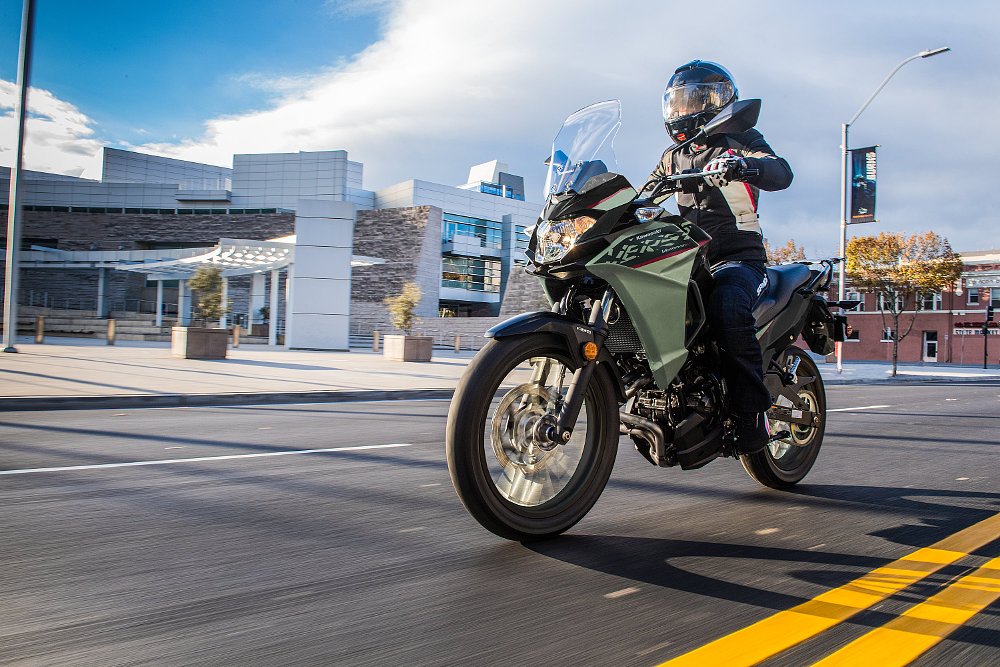
So yeah, maybe I can't definitively say the BMW G 310 GS is the smallest bike I'd want to take a trip on. In any case, your answer to the question will be different, depending on your own standards and preferences.
Sure, some will tell you anything less than a 700-pound bagger is too small for travel. Others will say that changing time zones on anything without an electrically adjustable windscreen, shaft final drive, and electronic cruise control is uncivilized to the point of unacceptable barbarism.
Whatever. Everyone has the right to their opinions. I just listen, nod, and form my own. That's my real takeaway: Don't let anyone else tell you what you can't do on a small motorcycle. Just go do it.

 Membership
Membership

